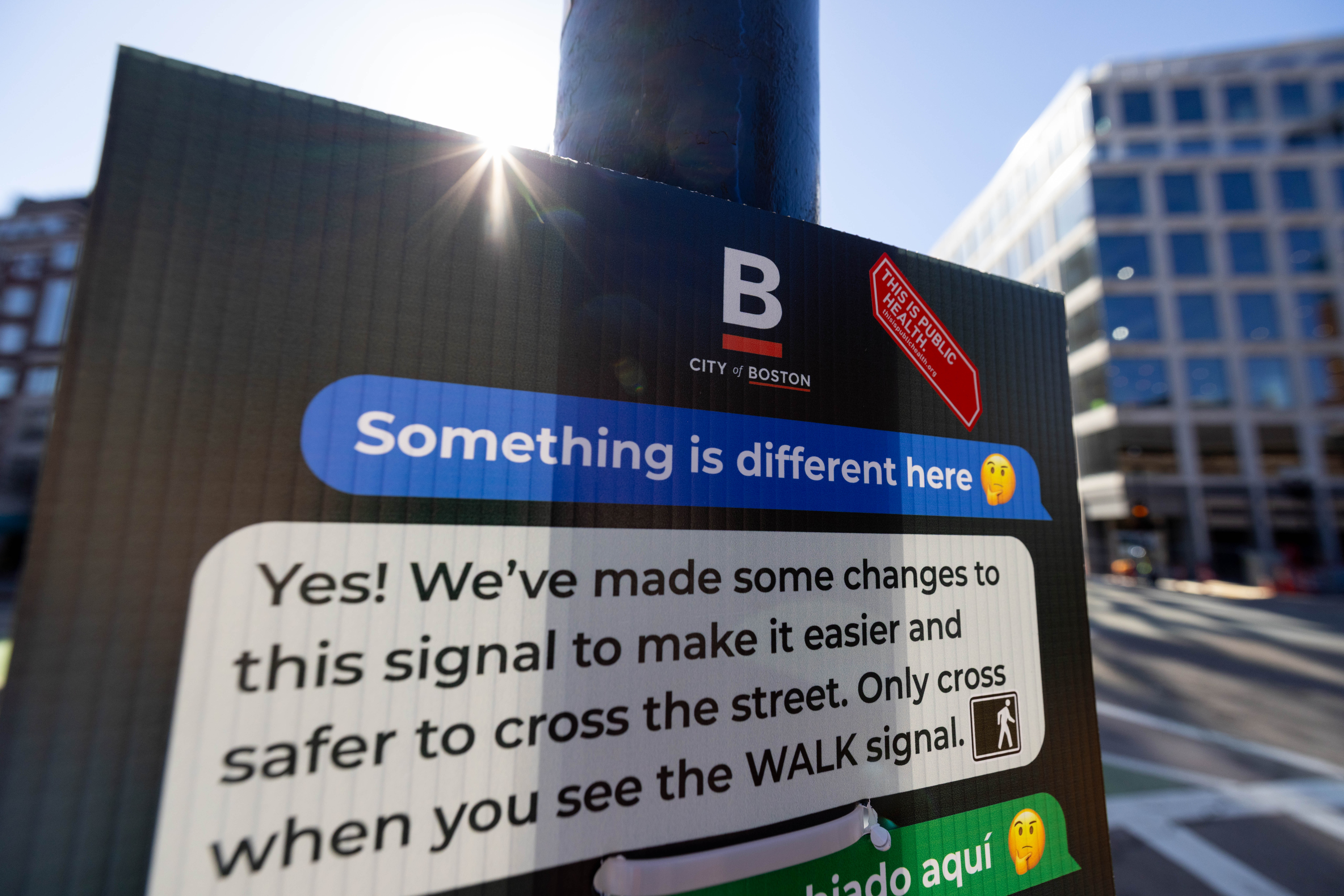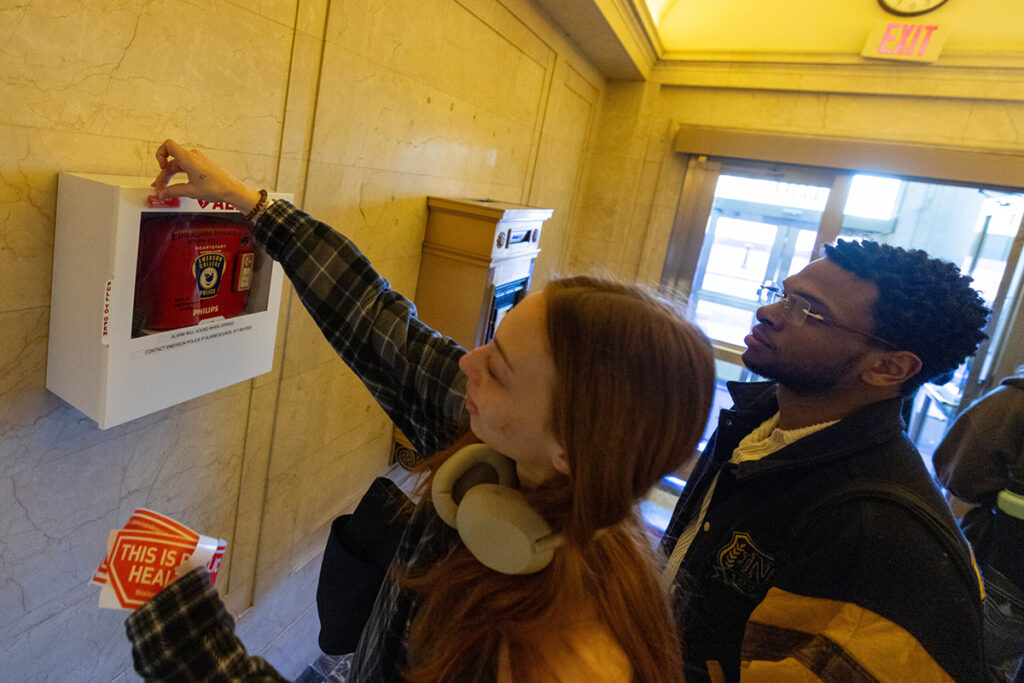Emerson Students Reveal Public Health Systems Shaping Everyday Life

Most people don’t think twice about the crosswalk they use, the water fountain they drink from, or the bike lane they pass on their way to class.
But for students in Nancy Lyons’ U.S. Healthcare and Public Health Systems class, a recent assignment challenged them to see these everyday structures in a new light as essential pillars of public health.
As part of the “This is Public Health” project, students stepped outside the classroom and into the city to identify real-world examples of public health infrastructure. Their mission was to uncover the often-overlooked ways in which public health quietly shapes their daily lives.
They placed removable stickers on various features, ranging from storm drains to playgrounds, and shared photos on Instagram using the hashtag #ThisIsPublicHealth to raise awareness.

“The goal of this assignment is to observe, acknowledge and celebrate the everyday public health successes and wins that would otherwise go unnoticed,” said Lyons, an executive-in-residence in the Marlboro Institute of Liberal Arts and Interdisciplinary Studies. “By making these underappreciated elements of public health more visible to the public at large, the goal is to bring broader attention to the community that public health is a force of good in their lives, whether they are aware or not.”
Throughout the semester, students have explored the broad scope of public health, examining policies, infrastructure, and initiatives that promote community wellbeing. They’ve studied topics such as disease prevention, environmental health, healthcare accessibility, and social determinants of health – concepts that often seem abstract until applied to real-world settings.
“I enjoyed putting all the time spent learning about public health into action and getting out there, seeing firsthand just how much public health work is happening around us,” said Briana Primavera ‘26. “Recent news often highlights public health challenges rather than successes, but seeing these efforts firsthand was a reminder of the positive impact public health has and that motivates me even more to contribute to the field.”
For Lyons, there was no better place for this assignment than Boston, a city with a rich history of public health innovation.
“We have so many firsts in the country: the first public health department, first public park, first transit station, first public school, first public library,” said Lyons. “All of these are essential elements of public health whose goal it is to promote a state of complete physical, mental, and social wellbeing.”
For Karli Wallace ‘25, the assignment reinforced how Boston’s infrastructure continues to uphold public health principles.
“The city is uniquely situated with really good public transportation, and we have Bluebikes, which a lot of people use,” said Wallace .”I felt particularly prideful of Boston’s infrastructure and how well it’s mapped out.”

For many students, the assignment revealed just how broadly public health extends, beyond hospitals and disease prevention into infrastructure, accessibility, and community welfare.
“Public health is about ensuring that communities and society as a whole have what they need to stay healthy,” said Primavera. “It goes beyond just treating diseases, it addresses the larger systems and conditions that impact physical, social, emotional, and economic wellbeing.”
Emmett Davis ‘25 intentionally focused on overlooked aspects of public health, choosing to place a sticker on the Boston Common Frog Pond as a way to emphasize the importance of recreational spaces.
“People certainly don’t consider places to have fun as public health, but it is,” said Davis. “Public health isn’t just about your physical health, it’s about your mental health, too. Having areas where people can gather, play, and enjoy themselves is just as important.”
While the assignment may have been a one-day activity, its impact will last beyond the project. For many students, the experience reinforced the importance of raising awareness about public health.
“It makes me want to, if not go into the sectors of professional public health, certainly go into the sector of grassroots and spreading awareness,” said Davis. “I’ve already started doing that by sharing what I’ve learned in this class with my friends and family.”
Categories